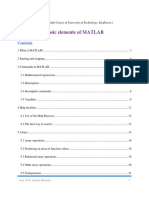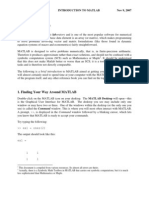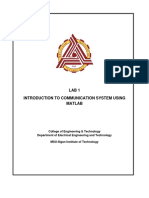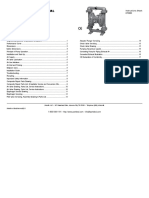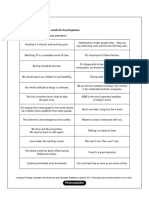0% found this document useful (0 votes)
29 views15 pagesDIP Lab 01-SP23
The document outlines Lab #01 for CS457 - Digital Image Processing at Usman Institute of Technology, focusing on introducing students to MATLAB fundamentals including basic calculations, plotting, and matrix operations. It describes the MATLAB environment, basic arithmetic operations, variable creation, and error handling, along with examples of mathematical functions and plotting techniques. The lab aims to equip students with essential skills for technical computing using MATLAB.
Uploaded by
abdulrehman.smurfCopyright
© © All Rights Reserved
We take content rights seriously. If you suspect this is your content, claim it here.
Available Formats
Download as DOC, PDF, TXT or read online on Scribd
0% found this document useful (0 votes)
29 views15 pagesDIP Lab 01-SP23
The document outlines Lab #01 for CS457 - Digital Image Processing at Usman Institute of Technology, focusing on introducing students to MATLAB fundamentals including basic calculations, plotting, and matrix operations. It describes the MATLAB environment, basic arithmetic operations, variable creation, and error handling, along with examples of mathematical functions and plotting techniques. The lab aims to equip students with essential skills for technical computing using MATLAB.
Uploaded by
abdulrehman.smurfCopyright
© © All Rights Reserved
We take content rights seriously. If you suspect this is your content, claim it here.
Available Formats
Download as DOC, PDF, TXT or read online on Scribd
/ 15













